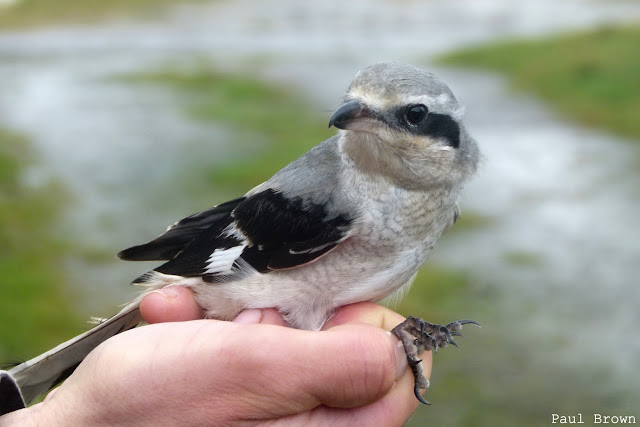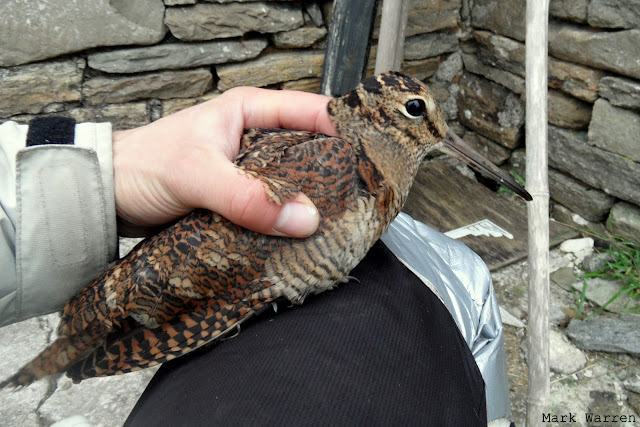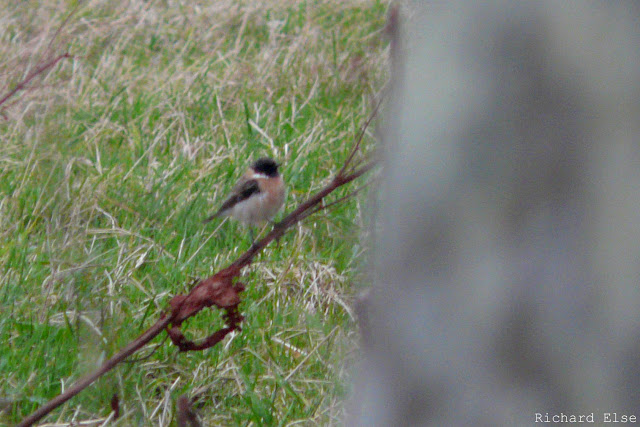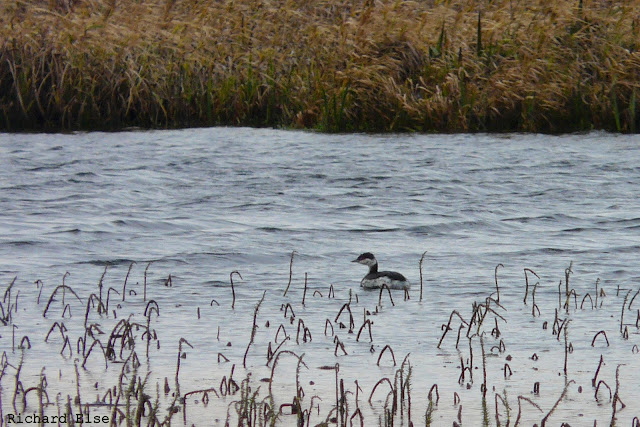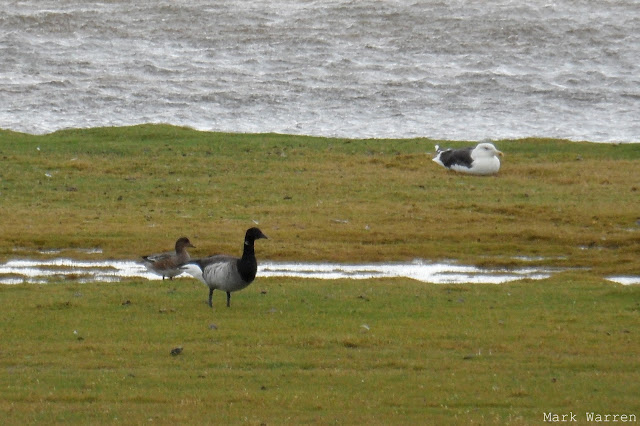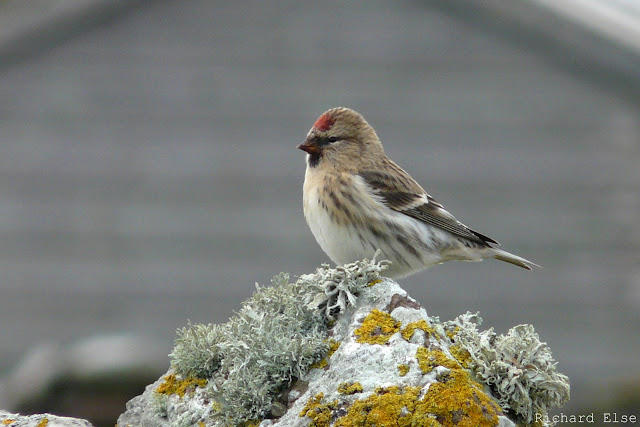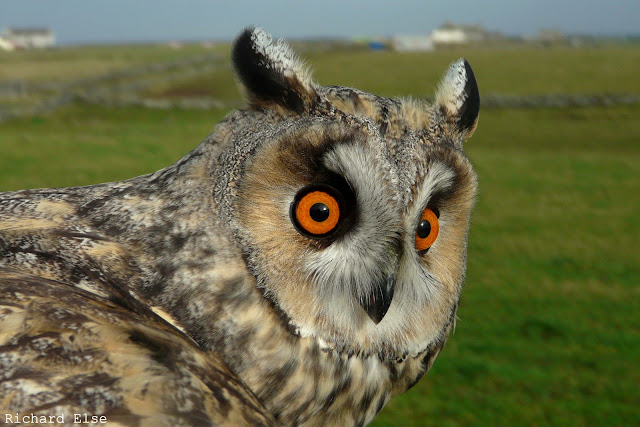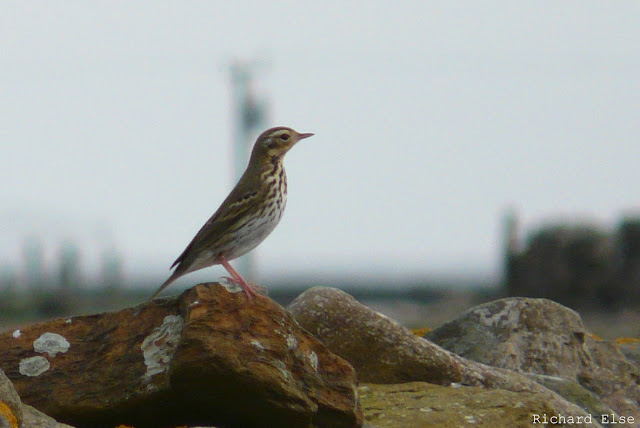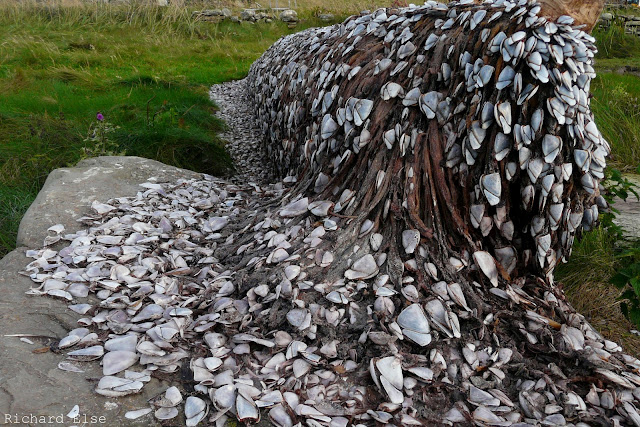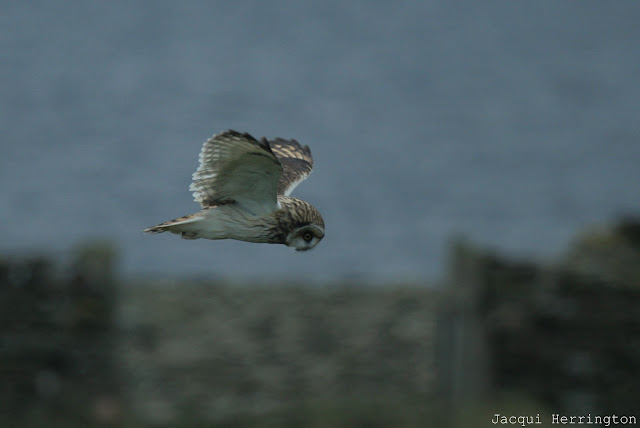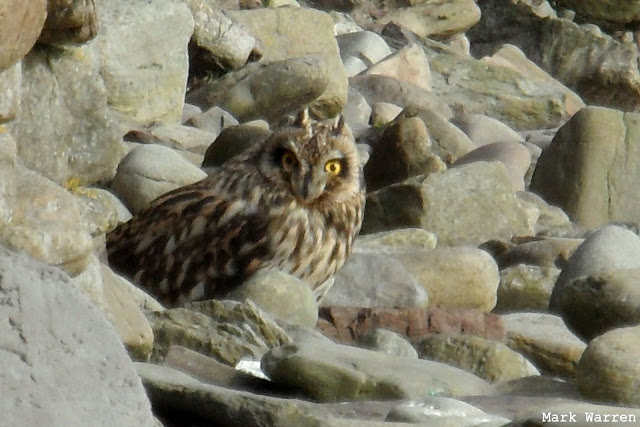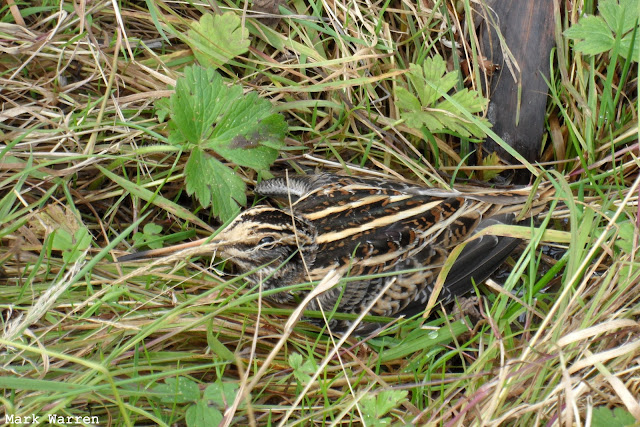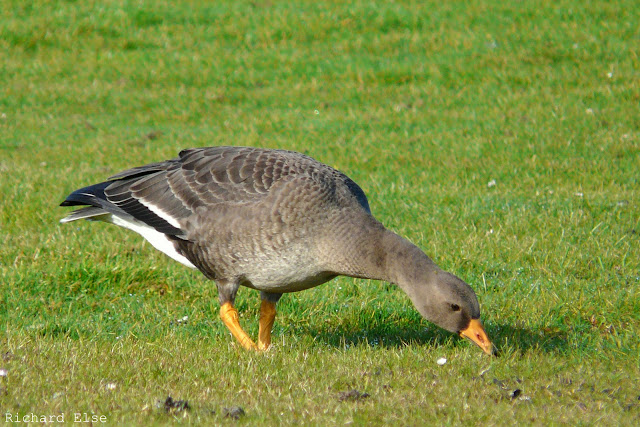In more windy westerly weather, the most interesting sightings all involved wildfowl. Pick of the bunch was a drake
Velvet Scoter, a very scarce species here, that flew past the old beacon heading east during the morning.
Greylag Geese were scattered around the island, with 12
Barnacle Geese, 5
Pink-footed Geese and a
European White-fronted Goose arriving during the day and the lingering
Greenland White-fronted Goose still in residence at the north of the island.
A
Grey Phalarope was at Quoy Banks in the morning, and a presumed different individual was at Bridesness a short time later. The long-staying
Short-toed Lark, reappearing after 6 days, was the best passerine. A
Common Redpoll was seen and counts of thrushes came to 29
Fieldfares and 355
Redwings.
As nobody has taken any usable bird photos in the last few days, I finally get chance to use this picture of an impressive cluster of Goose Barnacles taken back in September. In the autumn, these creatures finish their amazing transformation into Barnacle Geese, lose their protective shells, detach themselves from their driftwood anchor and take flight, ready to spend the winter grazing with other types of geese. The Barnacle Geese seen on the island today must be among the first to have completed their metamorphosis this year, but, by the looks of this picture, we can expect many more in the coming weeks.
Reference: Cambrensis, Giraldus. Of barnacles, which grow from fir timber, and their nature (1188).
